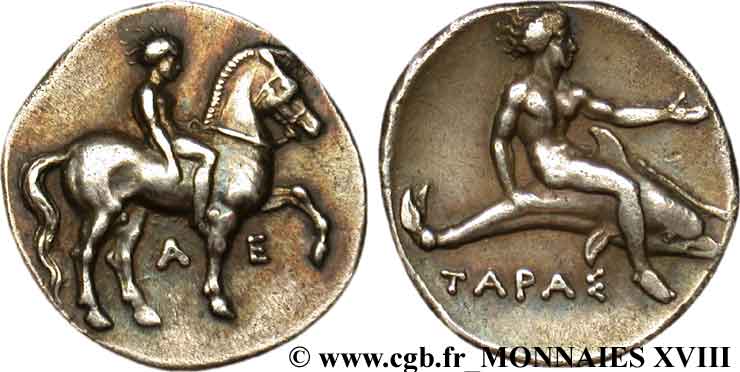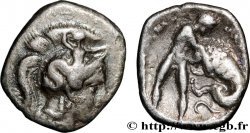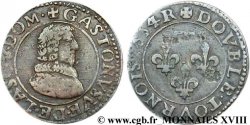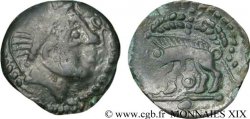v18_0004 - CALABRIA - TARAS Nomos, statère ou didrachme
MONNAIES 18 (2003)
Starting price : 750.00 €
Estimate : 1 200.00 €
Realised price : 1 805.00 €
Number of bids : 7
Maximum bid : 2 493.00 €
Starting price : 750.00 €
Estimate : 1 200.00 €
Realised price : 1 805.00 €
Number of bids : 7
Maximum bid : 2 493.00 €
Type : Nomos, statère ou didrachme
Date: c. 350 AC.
Mint name / Town : Tarente
Metal : silver
Diameter : 22 mm
Orientation dies : 1 h.
Weight : 7,83 g.
Rarity : R2
Coments on the condition:
Pièce de haut relief. Représentation exceptionnelle, parfaitement centré des deux côtés avec une magnifique patine de médaillier grise avec des reflets mordorés et bleuâtres qui recouvrent la plus grande partie du champ. L’expression des visages est saisissante
Catalogue references :
Predigree :
Cet exemplaire provient d’une vieille collection des années 30 avec comme source, la collection Cote (n° 2) sans autre information
Obverse
Obverse description : Cavalier passant au pas à droite, nu, tenant les rênes de son cheval de la main gauche, le bras droit le long du corps.
Obverse legend : A-E
Reverse
Reverse description : Taras nu, chevauchant un dauphin à droite, tendant la main gauche, le bras droit le long du corps.
Reverse legend : TARAS
Commentary
Mêmes coins que les exemplaires de l’American Numismatic Society (ANS. 942) et de la collection Jameson (n° 119).
Same dies as the American Numismatic Society (ANS. 942) and Jameson Collection (No. 119) examples
Same dies as the American Numismatic Society (ANS. 942) and Jameson Collection (No. 119) examples








 Report a mistake
Report a mistake Print the page
Print the page Share my selection
Share my selection Ask a question
Ask a question Consign / sell
Consign / sell
 Full data
Full data















